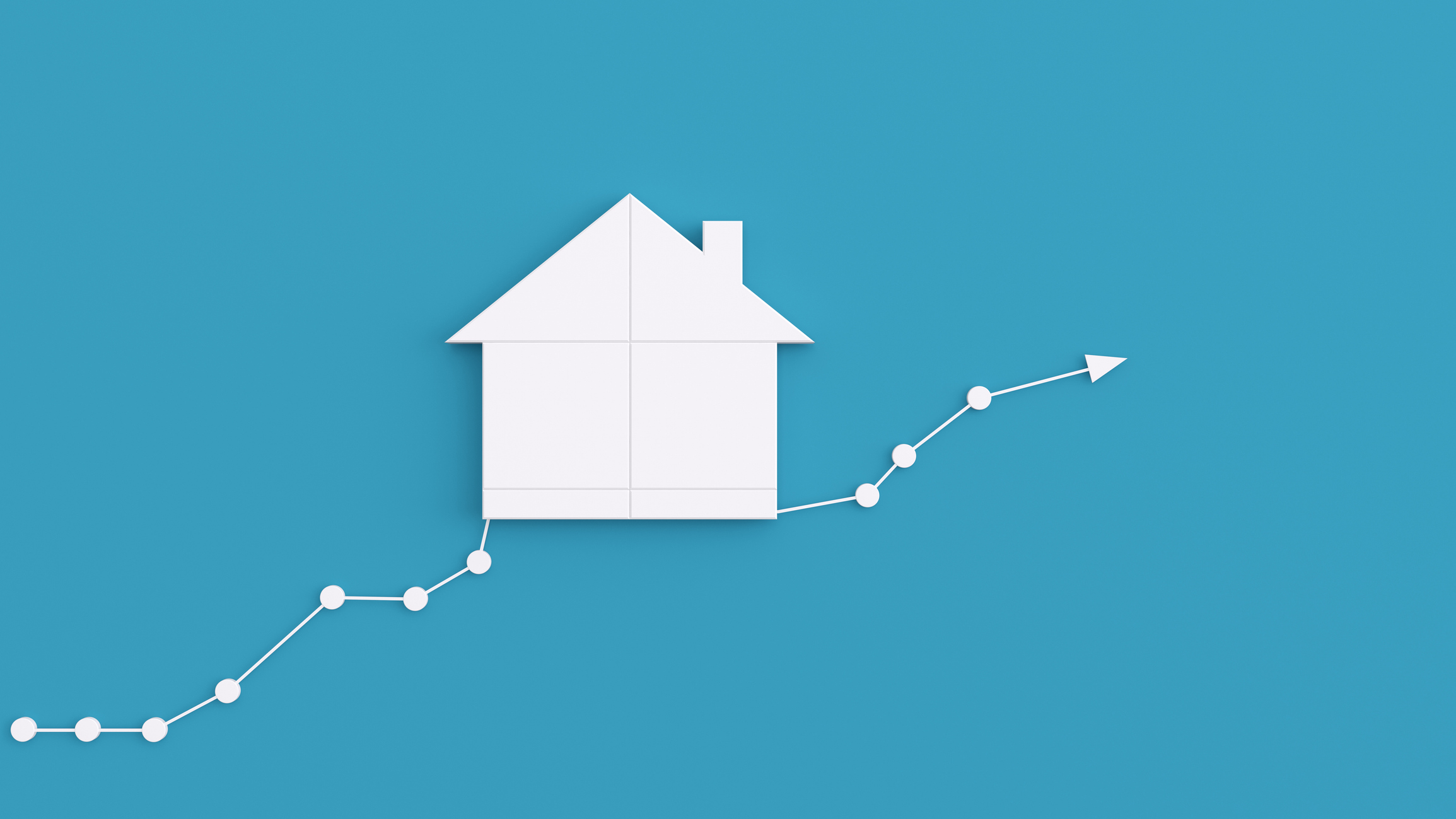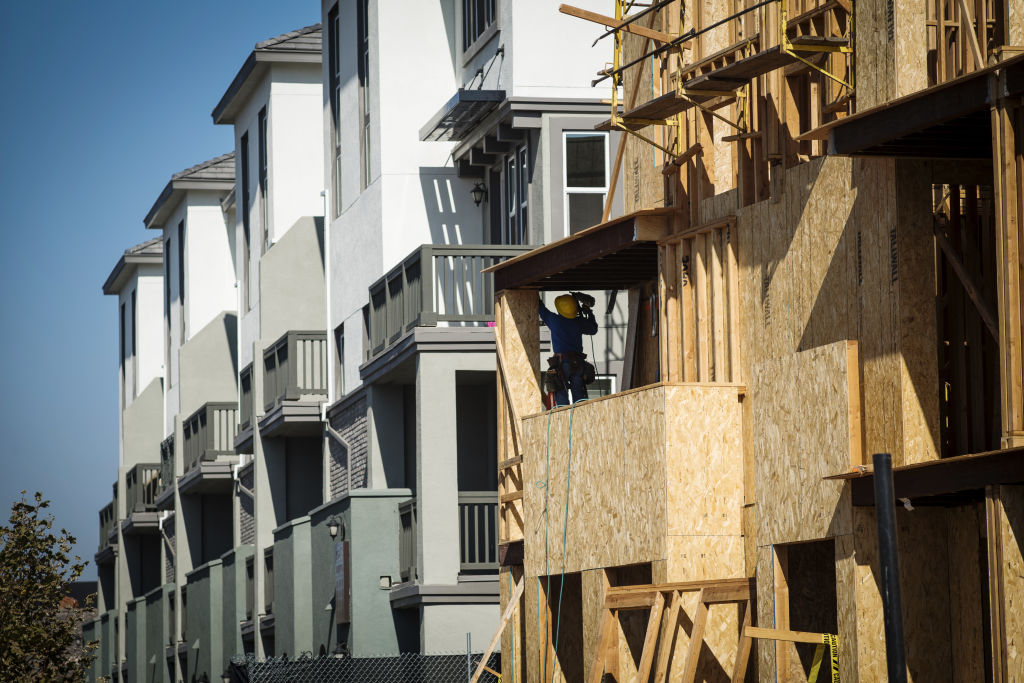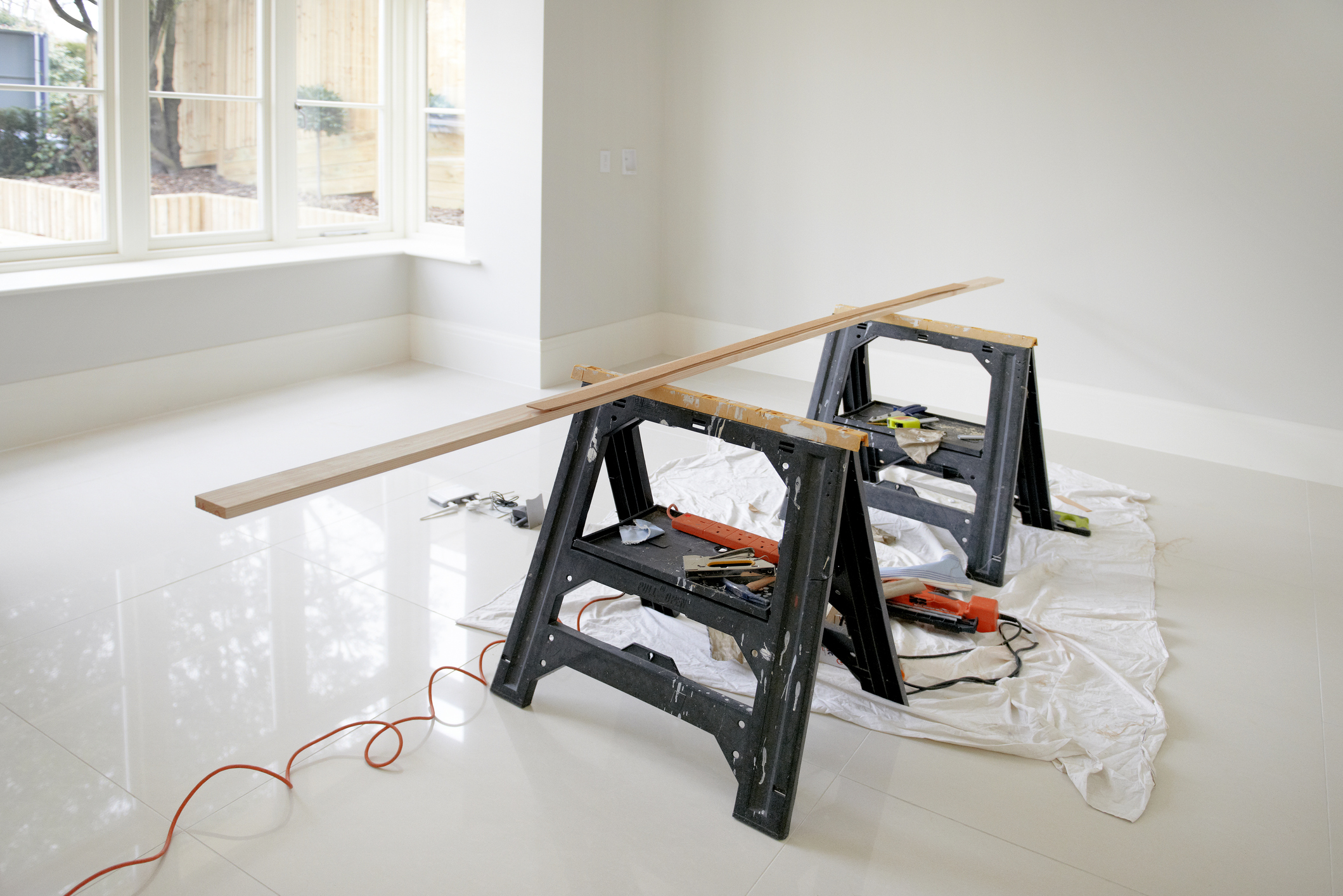Why These Homebuilders' Stock Buybacks Are Important for Investors
Strong housing demand makes homebuilders an ideal long-term investment. The fact that these four are actively buying back their stock only sweetens the pot.


There's always a case for investing in homebuilders. Demand is inexorable and supply is limited. The fluctuation in supply and demand gets mismatched at intervals, and that can cause problems for investors, but in the long term, things tend to work out among homebuilders and the companies largely tied to them.
To wit, the homebuilder stocks discussed below have delivered returns of between 200% and 400% – not including any dividends over the past decade.
These stocks are all fundamentally sound, but for this column, I wanted to add a twist: These companies all have a large stock buyback plan in place. Toll Brothers (TOL) is massive at potentially 18% of shares outstanding, American Woodmark's (AMWD) is 8.3%, unusually large, and the buybacks for PulteGroup (PHM) and M/I Homes (MHO) are notable among homebuilders.
From just $107.88 $24.99 for Kiplinger Personal Finance
Be a smarter, better informed investor.

Sign up for Kiplinger’s Free Newsletters
Profit and prosper with the best of expert advice on investing, taxes, retirement, personal finance and more - straight to your e-mail.
Profit and prosper with the best of expert advice - straight to your e-mail.
Why these homebuilders' stock buybacks are important
Stock buybacks are important. First, numerically, they reduce shares outstanding, which drives up earnings per share. With price-to-earnings (P/E) multiples constant (not assured), share prices should follow.
Buybacks are also important because they provide a read on management sentiment. It's fair to say boards and management confident about the future put buyback authorizations in place and execute on them.
The moderate forecast for home sales could turn sharply one way or the other given Fed policy. And Fed policy could turn sharply based on the Consumer Price Index (CPI), the Producer Price Index (PPI) or a myriad of factors that make a read-through to homebuilders unsatisfying if not unproductive.
For investors, the best bet might be to go long housing, pick fundamentally sound companies such as the four featured below that are reducing share counts, and let the rest take care of itself.
Data is as of March 12.
Toll Brothers

- Market value: $12.7 billion
- Dividend yield: 0.7%
The many crosscurrents in the housing market make forecasting how well Toll Brothers will do this year challenging. But one forecast is not difficult: There will be fewer shares outstanding, and a declining share count will increase the earnings per share.
Toll's annual reports show 112 million shares outstanding as of October 31. In December, the homebuilder said its board of directors approved a 20 million share repurchase or about 18% of shares outstanding. That's a big number, and notably for investors, confidence writ large.
In 2024, a large buyback could have a significant impact. Analysts' consensus earnings per share estimate for this year is $13.72, according to Yahoo Finance. However, if the share count is reduced by 20 million shares, earnings per share will be $14.72, and using the current price-to-earnings multiple of roughly 9 times, the implied share price is $132 versus the approximately $120 today. ($14.72 earnings estimate x 9).
This is hypothetical of course. Just because a stock buyback is in place does not mean it will be acted on, or if so, not for all 20 million shares and certainly not all at once. Net-net, the buyback is a good reason to like the stock, but it's not only the reason to own it.
Some of the reasons to consider owning the stock come down to macroeconomics: Declining interest rates, a no-show recession, an improving real estate market, and perhaps most compelling of all, the demand for housing only goes in one direction. No matter what, there will be a market for the homes that Toll makes.
There are graveyards stocked with companies that did not have the financial strength to capitalize on or weather, the vicissitudes of their market. Financially, Toll is not bulletproof, but it's strong. Looking at balance sheet leverage, business risk, profits and cashflows, Toll is ranked B++ by Value Line, which puts it above four of its peers, but below American Woodmark, D.R. Horton (DHI) and Lennar (LEN), the latter two of which have material buybacks. Should housing take a dip, Toll's stock buybacks could be material in earnings per share growth versus peers.
PulteGroup

- Market value: $23.8 billion
- Dividend yield: 0.7%
Part of the challenge for investors in 2024 is that Pulte had a banger year in 2022. This made comparisons tougher in 2023, yes, and will do so again this year. Earnings per share in 2022 were $11.01 and expectations for this year are $11.87. That puts bottom-line growth at a decidedly tepid average annual rate of under 4%.
This is where a stock buyback could help in 2024. The latest figures available from 10-K filings show PulteGroup has about $683 million of buybacks outstanding. At about $110 per share, PHM could, theoretically take nearly 6 million shares off the market, or about 3% of its float, an upward push on earnings.
Pulte spent $1 billion in buybacks in 2023, and it has financial chutzpah for another $683 million: Pulte has $1.8 billion in the bank, and last year, cash flow from operations was $2.2 billion, with modest capital expenditures of just $92 million.
But all of this is financial engineering. Compelling perhaps is that Pulte has increased earnings nearly every year for the past decade. PHM is strong financially, with shareholder equity about twice total liabilities. Debt management is important. When times are bad in the housing market, it tamps down on financial risk. When times are good, Pulte has plenty of dry powder to capitalize on opportunities.
Like Toll, Pulte is a long game. In the case of PHM, investors who bought in when the company went public in 1984 have enjoyed a 4,500% return or 10% annually, higher than the stock market at large.
American Woodmark

- Market value: $1.5 billion
- Dividend yield: N/A
Cabinetmaker American Woodmark operates in two key segments: New residential construction and repair and remodel.
Looking at the first segment, the growing demand for new homes augurs well in the near term for the company. According to the Commerce Department, building permits for privately owned housing units rose to 1.47 million in January of 2024, up 8.6% from January 2023's 1.35 million. American Woodmark is well-positioned to take advantage of the rising demand due to its innovative product offerings, competitive pricing, as well as the easing of disruptions in its supply chain.
On the other hand, repair and remodel look less sanguine. According to the Leading Indicator of Remodeling Activity released by the Joint Center for Housing Studies of Harvard University, annual expenditures on homeowner improvements and maintenance are estimated to shrink through the first half of 2024 – a 2.7% decline through the first quarter and a 5.9% decline through the second. This sluggishness is expected to continue until the Fed starts cutting interest rates which would theoretically ease mortgage rates.
Homeowners don't need a mortgage to remodel, but they may need to take out a loan against the equity in their home – a home equity loan – and higher mortgage rates mean higher home equity loan rates, which could tamp down demand on remodeling.
It's difficult to put the malaise in remodeling into precise context because American Woodwork doesn't break out sales by segment. However, for fiscal 2023, it did report that about $900 million of its sales came from builders and another $900 million through retail distribution centers. Assuming that builders operating at scale don't go to Home Depot for cabinets, it's tenable to estimate that repair could be as much as half of its business. (Another $300 million of sales were through independent dealers and distributors.)
Still, 2023 was a banner year with record net income, but this performance continues a lumpy trajectory. Earnings for 2021 were off from the prior year, and in 2022 the company reported a loss on a GAAP basis.
Notwithstanding, the analyst community is bullish, with the average earnings per share forecast of $6.89, a healthy bump from the $5.62 earned last year.
And American Woodwork itself is feeling bullish too. For the first nine months of fiscal 2024 (beginning May 25, 2023), the company repurchased 938,144 shares, approximately 5.9% of shares outstanding, for $71.8 million.
Notably, the board authorized another $125 million in repurchases in November. Given AMWD's market cap of $1.5 billion, this authorization is material. If the second half of last year is any indication, the share count will be going down, and whether from growth or buybacks or both, earnings per share will be going up.
M/I Homes

- Market value: $3.6 billion
- Dividend yield: N/A
M/I Homes had a decidedly modest 2023. Homes delivered, revenue and earnings declined in the low single digits. Historically, MHO has been a stellar performer, increasing earnings per share from $1.84 in 2016 to last year's $16.21, a spectacular average annual growth rate of 36.5%. The much slower average annual growth in revenue during the same period, 13.2%, demonstrates management's skill at driving down costs and wringing profit out of sales.
Management doesn't get all of the credit, as increases in home prices and overall demand play a big role too. With housing stocks, investors with a longer-term horizon need not worry too much. For those looking at the shorter term, housing fundamentals play a big role, but so do company fundamentals.
In this regard, MHO is an able competitor. The company is unlevered with equity 1.6 times its total liabilities. In other words, every dollar of MHO's liabilities is backed by $1.60 in equity.
When comparing equity to total borrowings, the picture is better: There is $2.50 of equity behind every dollar of debt owed to lenders. And MHO throws off a ton of cash, $552 million last year, with modest (if not immaterial, i.e. less than 5%) capital expenditures.
This gives MHO plenty of financing flexibility in how it weathers the volatility of the housing market and jumps on opportunities. Last year, the only thing management did with this flexibility's to pay down debt, an indication perhaps, that an off year has not rattled them.
As of December 31, 2023, $127.8 million worth of MHO shares remained available for repurchase, which is approximately 3.6% of shares outstanding. Last year, MHO bought about $65 million of its stock back. Should the housing market remain lackluster, or even decline, it's possible MHO could increase buybacks to slow the decline in earnings per share.
Related content
Profit and prosper with the best of Kiplinger's advice on investing, taxes, retirement, personal finance and much more. Delivered daily. Enter your email in the box and click Sign Me Up.

-
 If You'd Put $1,000 Into Home Depot Stock 20 Years Ago, Here's What You'd Have Today
If You'd Put $1,000 Into Home Depot Stock 20 Years Ago, Here's What You'd Have TodayHome Depot stock has been a buy-and-hold banger for truly long-term investors.
-
 I Need to Free Up $1,000 in My Monthly Budget, and I've Already Given Up Starbucks and Dining Out. What Else Can I Do?
I Need to Free Up $1,000 in My Monthly Budget, and I've Already Given Up Starbucks and Dining Out. What Else Can I Do?Here are some creative ways to save up to $1,000 a month, even if you feel like you've already made all of the obvious cuts.
-
 If You'd Put $1,000 Into Home Depot Stock 20 Years Ago, Here's What You'd Have Today
If You'd Put $1,000 Into Home Depot Stock 20 Years Ago, Here's What You'd Have TodayHome Depot stock has been a buy-and-hold banger for truly long-term investors.
-
 Eight Steps to Help Get You Through the Open Enrollment Jungle at Work
Eight Steps to Help Get You Through the Open Enrollment Jungle at WorkWondering how to survive open enrollment this year? Arm yourself with these tools to cut through the process and get the best workplace benefits for you.
-
 Seven Moves for High-Net-Worth People to Make Before End of 2025, From a Financial Planner
Seven Moves for High-Net-Worth People to Make Before End of 2025, From a Financial PlannerIt's time to focus on how they can potentially reduce their taxes, align their finances with family goals and build their financial confidence for the new year.
-
 I'm a Financial Planner: These Are the Seven Tiers of Retirement Well-Being
I'm a Financial Planner: These Are the Seven Tiers of Retirement Well-BeingLet's apply Maslow's hierarchy of needs to financial planning to create a guide for ranking financial priorities.
-
 Why More Americans Are Redefining Retirement, Just Like I Did
Why More Americans Are Redefining Retirement, Just Like I DidRetirement readiness requires more than just money. You have a lot of decisions to make about what kind of life you want to live and how to make it happen.
-
 3 Major Changes Investors Must Prepare for in 2026
3 Major Changes Investors Must Prepare for in 2026A possible stock market bubble. Trump accounts. Tokenized stocks. These are just three developments investors need to be aware of in the coming months.
-
 A Compelling Case for Why Property Investing Reigns Supreme, From a Real Estate Investing Pro
A Compelling Case for Why Property Investing Reigns Supreme, From a Real Estate Investing ProInvestment data show real estate's superior risk-adjusted returns and unprecedented tax advantages through strategies like 1031 exchanges and opportunity zones.
-
 Stocks Close Out Strong Month With Solid Amazon Earnings: Stock Market Today
Stocks Close Out Strong Month With Solid Amazon Earnings: Stock Market TodayAmazon lifted its spending forecast as its artificial intelligence (AI) initiatives create "a massive opportunity."